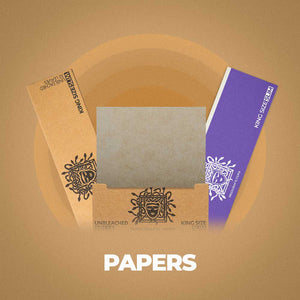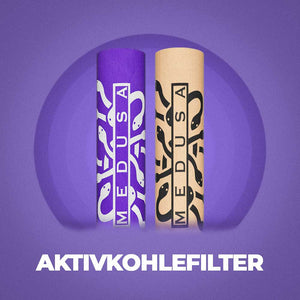What are the benefits of activated carbon filters?
Activated carbon filters are becoming increasingly popular in the smoking community. Many smokers now resort to them. We think: rightly so! They represent a simple but very effective method of reducing harmful substances in smoke to a minimum. First installed in the joint instead of a tip (twisted cardboard), it helps to sustainably protect the health of the consumer. Unlike cigarette filters, they contain filtering activated carbon. So your lungs will thank you. But what is the hype about activated carbon filters all about and what are the differences? You can find out here.
Activated carbon filters are available in different designs: structure and function
Numerous variants (tip-size, slim) are now on the market, but what is the structure and what are the differences between the most common models for joints? We draw a big comparison between the conventional activated carbon filters with ceramic caps and the new discovery of recent years with a cellulose cap.
First of all, we have to define what makes an activated carbon filter a good activated carbon filter. Because they all pursue the goal of giving cannabis consumers the most pleasant and low-emission smoking experience possible. Filled with activated carbon, which is used in the form of pellets, granules or a layer on a carrier material, the aim is to achieve the highest possible filter result (usually with a diameter of 6 mm - 7 mm). It's the inner values that matter!
The activated carbon is produced naturally or by treatment with vapors or chemicals, which creates a large number of pores that offer large surface areas. This process significantly changes the structure of the coal and “activates” it. Under the microscope it looks quite moon-like and porous.
This porous structure enables the activated carbon to bind chemicals, nitrogen and harmful gases or their molecules to the surface. This is called adsorption. It further reduces the burden through:
- Carbon monoxide
- nicotine
- nickel
- arsenic
- Nitrogens
- tar
- and much more.
All of this without absorbing large amounts of THC/CBD molecules. With over 600 different pollutants in the smoke, this is a bearable compromise.
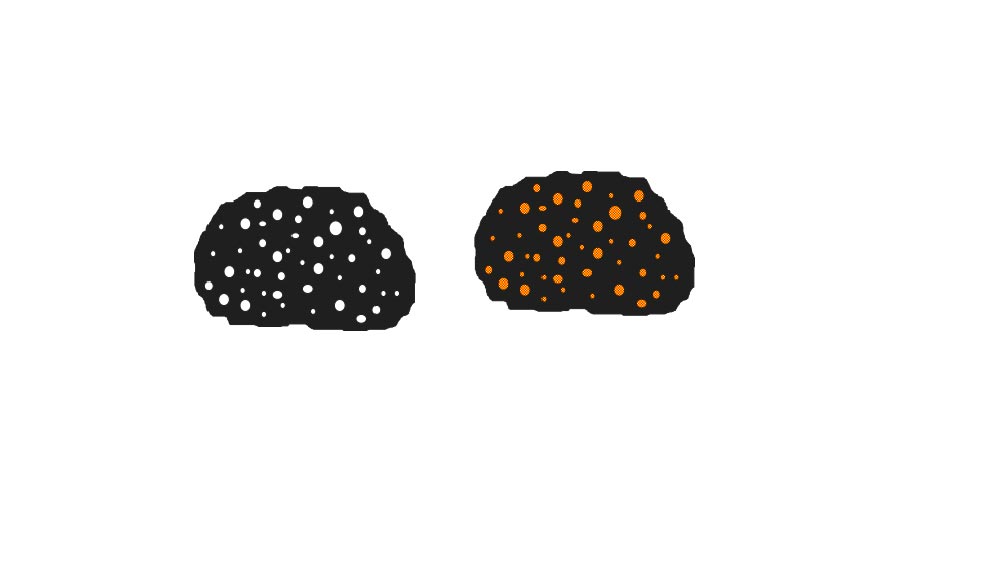
The efficiency of the activated carbon filter depends largely on the quantity, form and type of activated carbon. Here it is important to differentiate again between hard coal and that which is obtained from coconut shells. The latter shows significantly improved filter results.
Basically, it can be said that the finer the activated carbon, the higher the filter result for the same amount (since it has more surface area).
This is held in place by ceramic closures with perforations, or with open-pored cellulose caps (e.g. Medusa filters). By the way, there are now activated carbon filters even for bongs and one or two pipes.
Activated carbon filters with ceramic vs. cellulose caps – which is the better choice and what do they really do?
In order to come to a meaningful result, this question must be looked at from several perspectives.
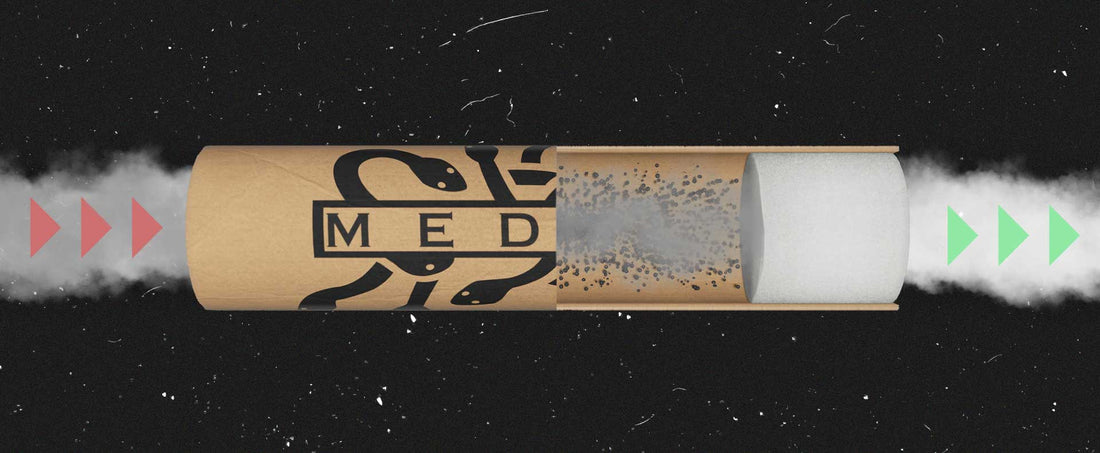
1. Reduction of pollutants
The activated carbon filter in the ceramic version filters smoking (especially tobacco) with coarse activated carbon pellets, which - as we learned above, can absorb fewer pollutants. However, due to the design and to avoid pieces of activated carbon in the mouth, this cannot be solved in any other way.
In addition, it is difficult to avoid inhaling activated carbon dust while pulling. This quickly leads to an adulterated taste and higher levels of pollutants.
The cellulose variant, on the other hand, does not depend on any perforation and can therefore use the activated carbon much more finely. This ensures higher filter power with less activated carbon. In addition, the cellulose caps on both sides filter carbon dust as well as tar and nicotine without significantly reducing cannabinoids and the effect of THC.
The taste when smoking with an activated carbon filter in the cellulose version is not distorted.
Active cellulose filter 1. Activated carbon filter with ceramic closure 0.
2. Activated carbon filter when smoking - draft & smoking behavior
Here too, the activated carbon filter in the ceramic version starts again.
At first glance the draft appears to be almost unchanged around “Tip”. At second glance, however, the view is somewhat more sobering.
Activated carbon has the property of liquefying at high temperatures. These exist in the filter at all times when smoking - pulling on the mouthpiece quickly closes the holes in the ceramic sleeve. This ensures a significantly reduced draft, including complete closure. Loose activated charcoal can also end up in your mouth if you pull too hard, and then the desired smoking experience will be a thing of the past.
Ceramic filters do not have heat protection, so the closer you smoke your joint to the filter, the smoke during the combustion process can be quite hot. In the best case scenario, this can lead to dry, chapped lips.
The cellulose filter - activated carbon filter:
The open-pored closures of the active cellulose filter are real heroes of every consumer. Not only do they capture the liquid activated carbon without clogging, they also ensure a cool hit from start to finish even if the joint is short.
Because your lips are there for kissing.
Active cellulose filter 2. Activated carbon filter with ceramic closure 0.
3. Environmental impact
First of all, it should be said that the correct disposal of each filter is a prerequisite for this comparison. Due to the pollutants captured in the filter, environmental pollution cannot be avoided if disposed of negligently. But let's now look at the production of activated carbon filters and their material properties.
In addition to a cardboard sleeve and design paper, the ceramic filter also uses the two ceramic caps that give it its name. This is one of the oldest materials in human history. Essentially described as a natural product, ceramic production still requires enormous amounts of energy today because the ceramic often has to be heated or sintered at 1200°C for 6-12 hours. With it, any reference to environmental neutrality in production is also destroyed. As current studies show, what is particularly harmful to the environment is the fact that in the mass production of ceramic products, fossil fuels are almost always used to fire the ovens - which results in environmentally harmful emissions. In addition, ceramic is not biodegradable - this can easily last a human life or even entire generations.
Cellulose is different. To be more precise, we are talking about cellulose acetate here. This is a biodegradable, bio-based plastic that can be used, for example, to make sustainable food packaging. Not to be confused with what is used in the classic cigarette filter. Accordingly, it also ends up in municipal waste. Cellulose acetate (abbreviation CA) is classified as a thermoplastic, but is more of a modified natural material. During production, cellulose, usually in the form of natural pulp, is esterified with acetic acid and acetic anhydride. Are there any processes now that are completely compatible with nature and environmentally friendly? Yes, this one!
Active cellulose filter 3. Activated carbon filter with ceramic closure 0.
Of course, other factors such as price, brand reputation and personal preferences also play a crucial role when assessing and comparing two product groups. This comparison is only intended to be the basis for this.
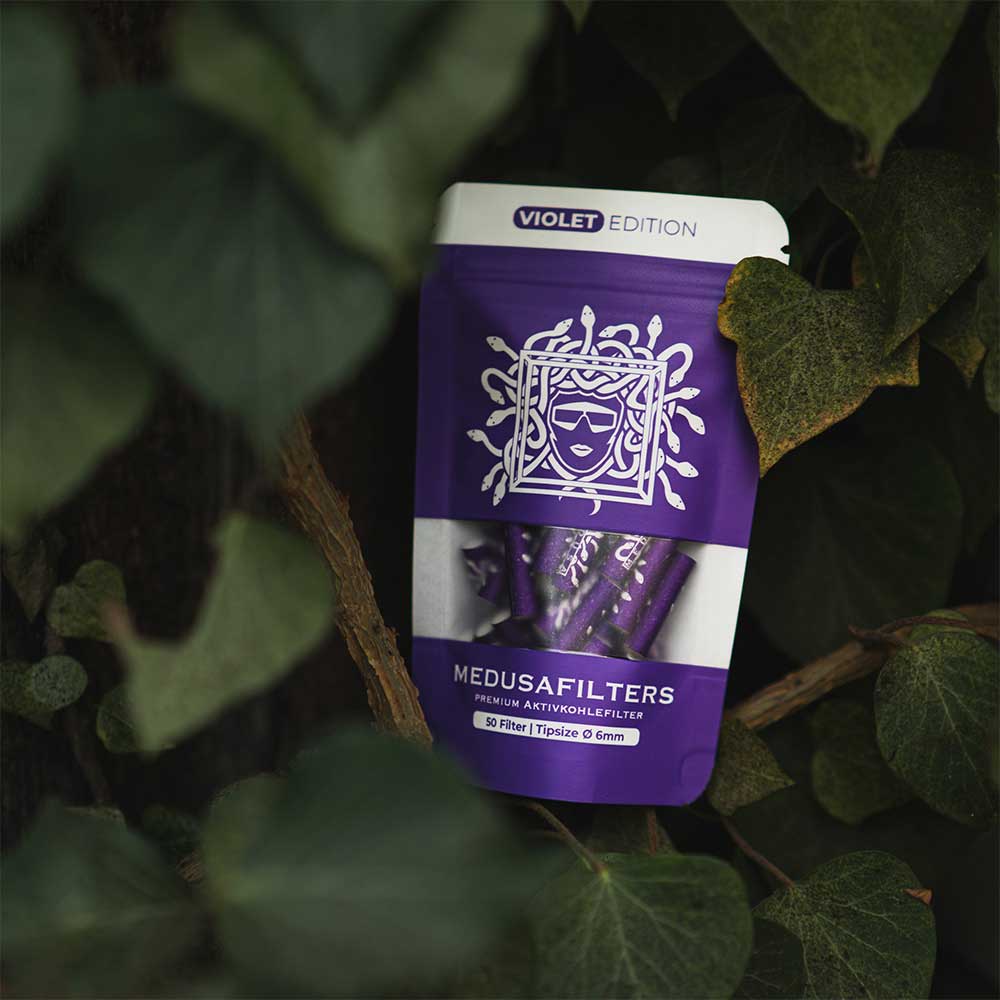
Summary - Which activated carbon filter for the best smoking experience?
It should be clear by now that activated carbon filters definitely win the race compared to cigarette filters without carbon, but there are also big differences in filter results and quality among the activated carbon filters themselves. An activated carbon filter joint should give you the most pleasant smoking experience possible without becoming the focus of attention. Cellulose activated carbon filters are on the rise and were clearly ahead in our comparison. But see for yourself! You can find out how long you are “high” or how you should ideally prepare for your first cannabis consumption in one of our other blogs.
Frequently asked questions about activated carbon filters
Activated carbon filters can reduce the level of pollutants in smoke by up to 90%, making smoking more pleasant and significantly lower in pollutants. The desired cannabinoids are passed through the filter practically unhindered. The penetration of pollutants is largely prevented.
Activated carbon filters are designed to use internal activated carbon to absorb harmful compounds, such as tar and other particles, from smoke. The activated carbon offers a large surface area on which these contaminants stick. This purifies the smoke before it is inhaled. They represent a good alternative to Tip.
Using activated carbon filters can help remove harmful compounds from smoke. This reduces the risk of some health consequences compared to smoking with a tip or traditional cigarette filters. Cough counteracted by milder smoke.
By filtering out up to 90% of pollutants, a slight change in taste is inevitable. In most cases, however, this is viewed as positive because the smoke can be enjoyed much cleaner.
You might also be interested in:
Sources:
Effect of Charcoal in Cigarette Filters on Free Radicals in Mainstream Smoke https://www.ncbi.nlm.nih.gov
Activated charcoal filter effectively reduces p-benzosemiquinone from the mainstream cigarette smoke and prevents emphysema https://pubmed.ncbi.nlm.nih.gov
https://www.abstractsonline.com/pp8/#!/5789/presentation/23033
Disclaimer:
This content is intended for educational purposes only. The information provided comes from research work, personal expert discussions and our own experiences that have been compiled.




